A Novel Dielectric Tomography System for In-Situ Tracking Three-Dimensional Soil Water Dynamics
Abstract
:1. Introduction
2. Materials and Methods
2.1. Description of Dielectric Tomography System
2.2. Sensor Principle and Calibration
2.3. Correcting Algorithm for Minimizing Out-of-Step Errors of Three Stepper Motors
2.4. Experimental Procedure
3. Results and Discussion
3.1. Dielectric Sensor Calibration and Test of Acquiring the Correcting CIs for the Out-of-Step Correction
3.2. The Temporal Variations of SWC along the Vertical Direction (Z-Axis)
3.3. The Temporal Variations of SWC along the Horizontal Direction (X- and Y-Axis)
3.4. Tomography of 3D SWC Distribution under Drip Irrigation Condition
4. Conclusions
Author Contributions
Acknowledgments
Conflicts of Interest
References
- Hedley, C.B.; Bradbury, S.; Ekanayake, J.; Yule, I.J.; Carrick, S. Spatial irrigation scheduling for variable rate irrigation. J. Gerontol. B Psychol. Sci. Soc. Sci. 2010, 72, 97–101. [Google Scholar]
- Merz, R.; Blöschl, G.; Parajka, J. Spatio-temporal variability of event runoff coefficients. J. Hydrol. 2006, 331, 591–604. [Google Scholar] [CrossRef]
- Norbiato, D.; Borga, M.; Merz, R.; Blöschl, G.; Carton, A. Controls on event runoff coefficients in the eastern italian alps. J. Hydrol. 2009, 375, 312–325. [Google Scholar] [CrossRef]
- Weiler, K.W.; Steenhuis, T.S.; Boll, J.; Kung, K.J.S. Comparison of ground penetrating radar and time-domain reflectometry as soil water sensors. Soil Sci. Soc. Am. J. 1998, 62, 1237–1239. [Google Scholar] [CrossRef]
- Fernándezgálvez, J.; Simmonds, L.P.; Barahona, E. Estimating detailed soil water profile records from point measurements. Eur. J. Soil Sci. 2006, 57, 708–718. [Google Scholar] [CrossRef]
- Weihermüller, L.; Huisman, J.A.; Lambot, S.; Herbst, M.; Vereecken, H. Mapping the spatial variation of soil water content at the field scale with different ground penetrating radar techniques. J. Hydrol. 2007, 340, 205–216. [Google Scholar] [CrossRef] [Green Version]
- Moradi, A.B.; Carminati, A.; Vetterlein, D.; Vontobel, P.; Lehmann, E.; Weller, U.; Hopmans, J.W.; Vogel, H.J.; Oswald, S.E. Three-dimensional visualization and quantification of water content in the rhizosphere. New Phytol. 2011, 192, 653–663. [Google Scholar] [CrossRef] [PubMed] [Green Version]
- Sun, Y.; Zhou, H.; Qin, Y.; Lammers, P.S.; Berg, A.; Deng, H.; Cai, X.; Wang, D.; Jones, S.B. Horizontal monitoring of soil water content using a novel automated and mobile electromagnetic access-tube sensor. J. Hydrol. 2014, 516, 50–55. [Google Scholar] [CrossRef]
- Heimovaara, T.J.; Bouten, W. A computer-controlled 36 channel time domain reflectometry system for monitoring soil water contents. Water Resour. Res. 1990, 26, 2311–2316. [Google Scholar]
- Cheng, Q.; Sun, Y.; Qin, Y.; Xue, X.; Cai, X.; Sheng, W.; Zhao, Y. In situ measuring soil ice content with a combined use of dielectric tube sensor and neutron moisture meter in a common access tube. Agric. For. Meteorol. 2013, 171, 249–255. [Google Scholar] [CrossRef]
- Ren, T.; Kluitenberg, G.J.; Horton, R. Determining soil water flux and pore water velocity by a heat pulse technique. Soil Sci. Soc. Am. J. 2000, 64, 552–560. [Google Scholar] [CrossRef]
- Brunet, P.; Clément, R.; Bouvier, C. Monitoring soil water content and deficit using Electrical Resistivity Tomography (ERT)—A case study in the Cevennes area, France. J. Hydrol. 2010, 380, 146–153. [Google Scholar] [CrossRef]
- Whalley, W.R.; Cope, R.E.; Nicholl, C.J.; Whitmore, A.P. In-field calibration of a dielectric soil moisture meter designed for use in an access tube. Soil Use Manag. 2004, 20, 203–206. [Google Scholar] [CrossRef]
- Sun, Y.; Cheng, Q.; Xue, X.; Fu, L.; Chai, J.; Meng, F.; Schulze Lammers, P.; Jones, S.B. Determining in-situ soil freeze–thaw cycle dynamics using an access tube-based dielectric sensor. Geoderma 2012, 189, 321–327. [Google Scholar] [CrossRef]
- Hu, R.; Brauchler, R.; Herold, M.; Bayer, P. Hydraulic tomography analog outcrop study: Combining travel time and steady shape inversion. J. Hydrol. 2011, 409, 350–362. [Google Scholar] [CrossRef]
- Samouëlian, A.; Cousin, I.; Tabbagh, A.; Bruand, A.; Richard, G. Electrical resistivity survey in soil science: A review. Soil Tillage Res. 2005, 83, 173–193. [Google Scholar] [CrossRef] [Green Version]
- Dean, T.J.; Bell, J.P.; Baty, A.J.B. Soil moisture measurement by an improved capacitance technique, part i. sensor design and performance. J. Hydrol. 1987, 93, 67–78. [Google Scholar] [CrossRef]
- Evett, S.R.; Steiner, J.L. Precision of neutron scattering and capacitance type soil water content gauges from field calibration. Soil Sci. Soc. Am. J. 1995, 59, 961–968. [Google Scholar] [CrossRef]
- Gaskin, G.C.; Miller, J.D. Measurement of soil water content using a simplified impedance measuring technique. J. Agric. Eng. Res. 1996, 63, 153–160. [Google Scholar] [CrossRef]
- Wobschall, D. A frequency shift dielectric soil moisture sensor. IEEE Trans. Geosci. Electron. 1978, 16, 112–118. [Google Scholar] [CrossRef]
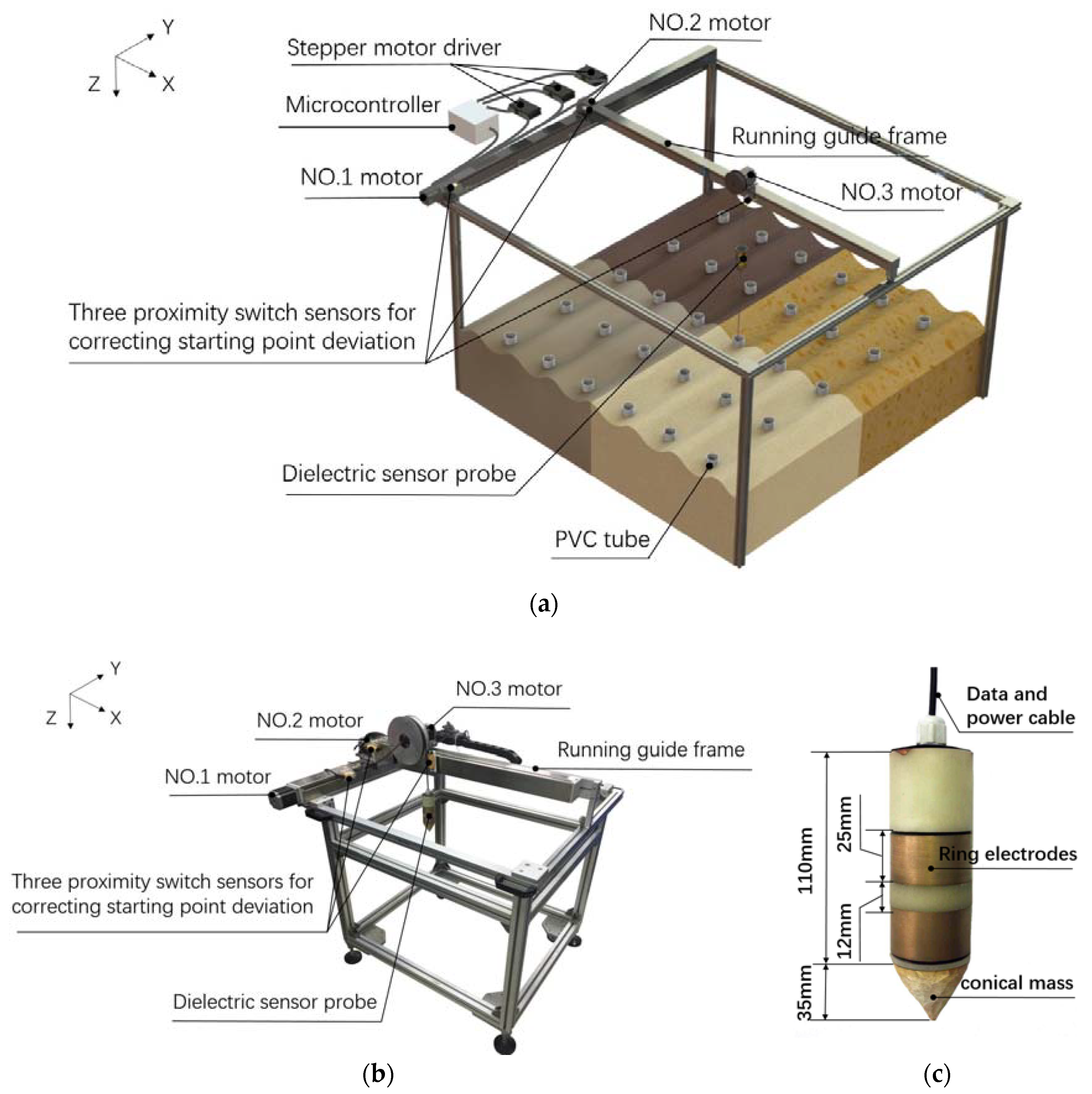



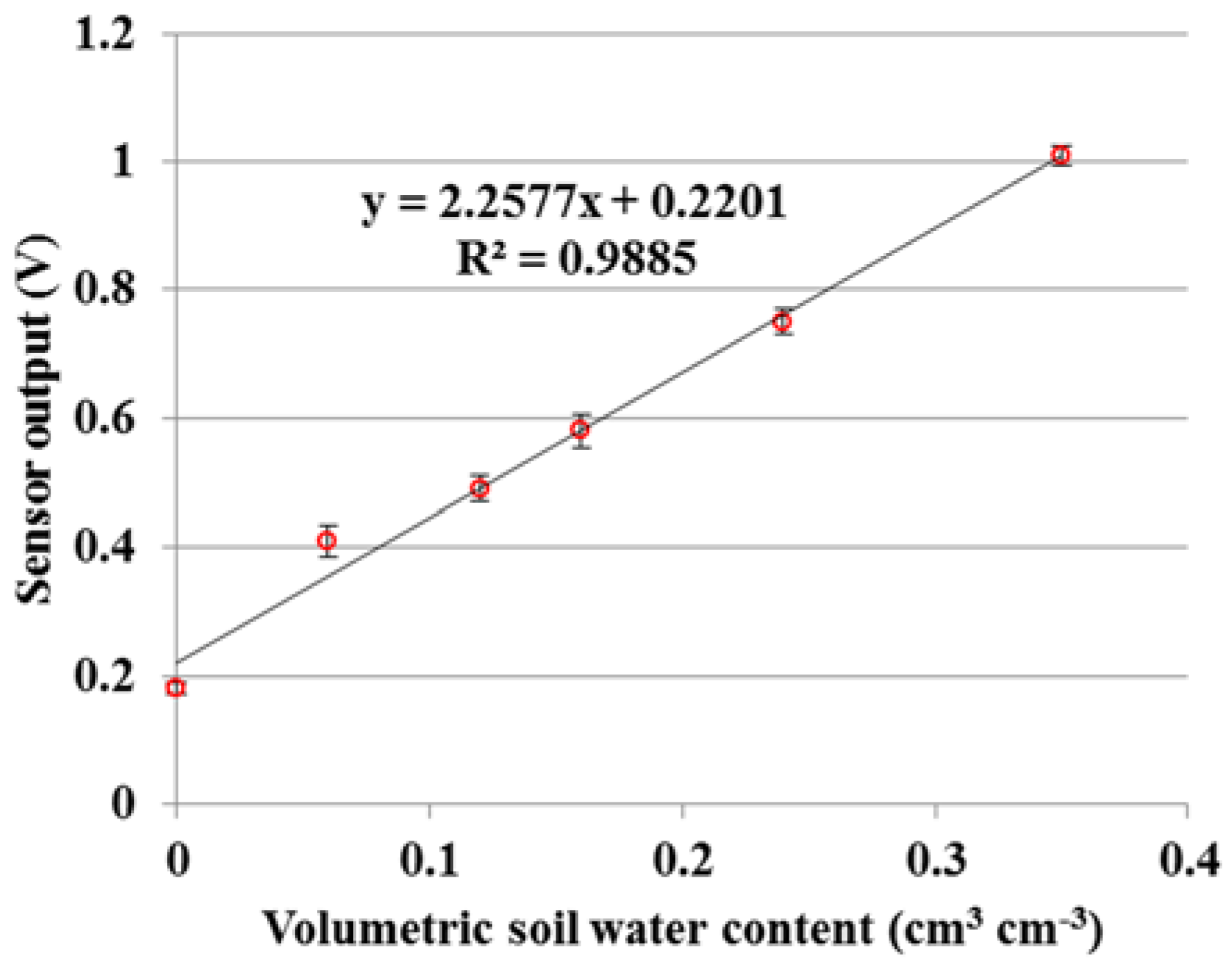
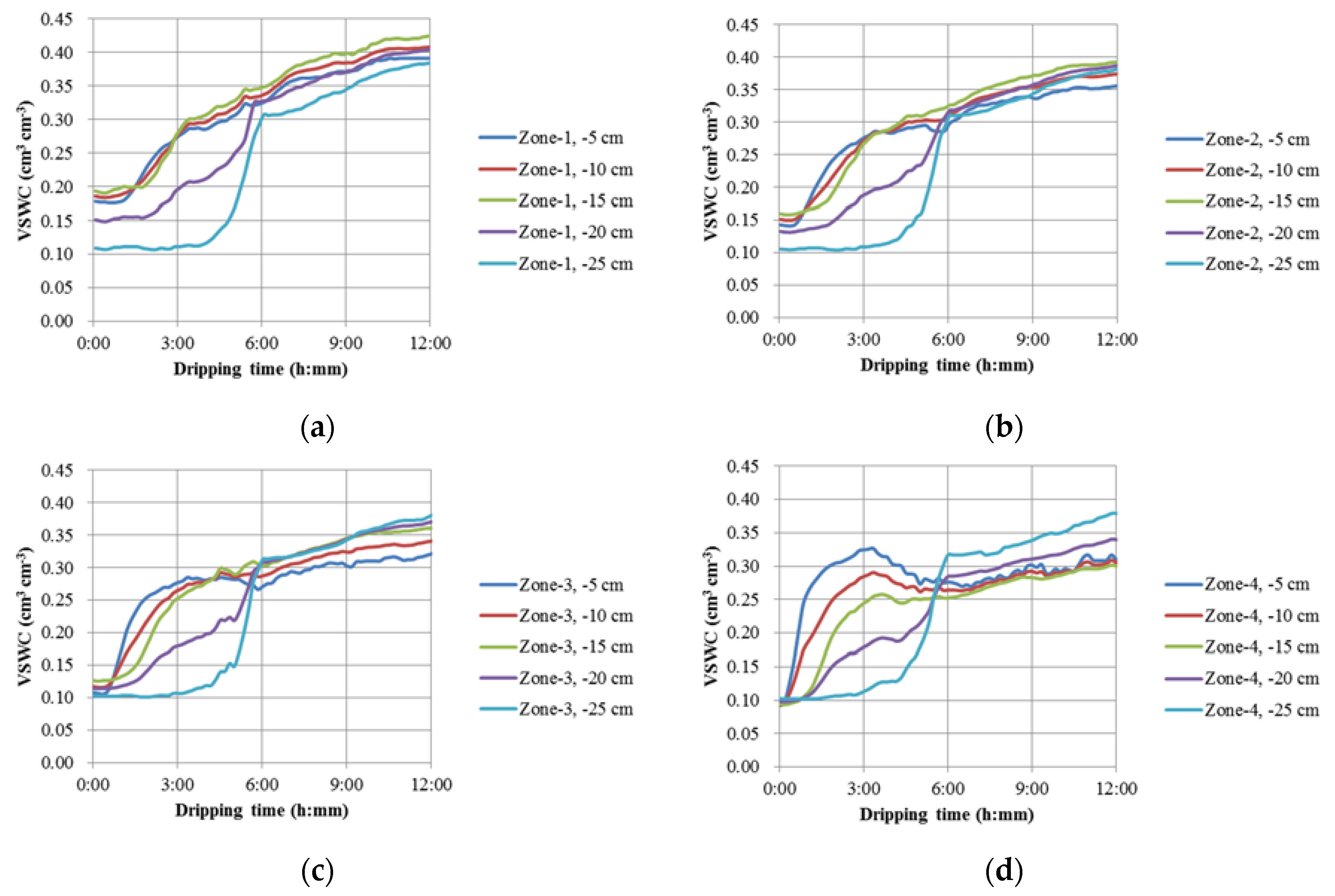
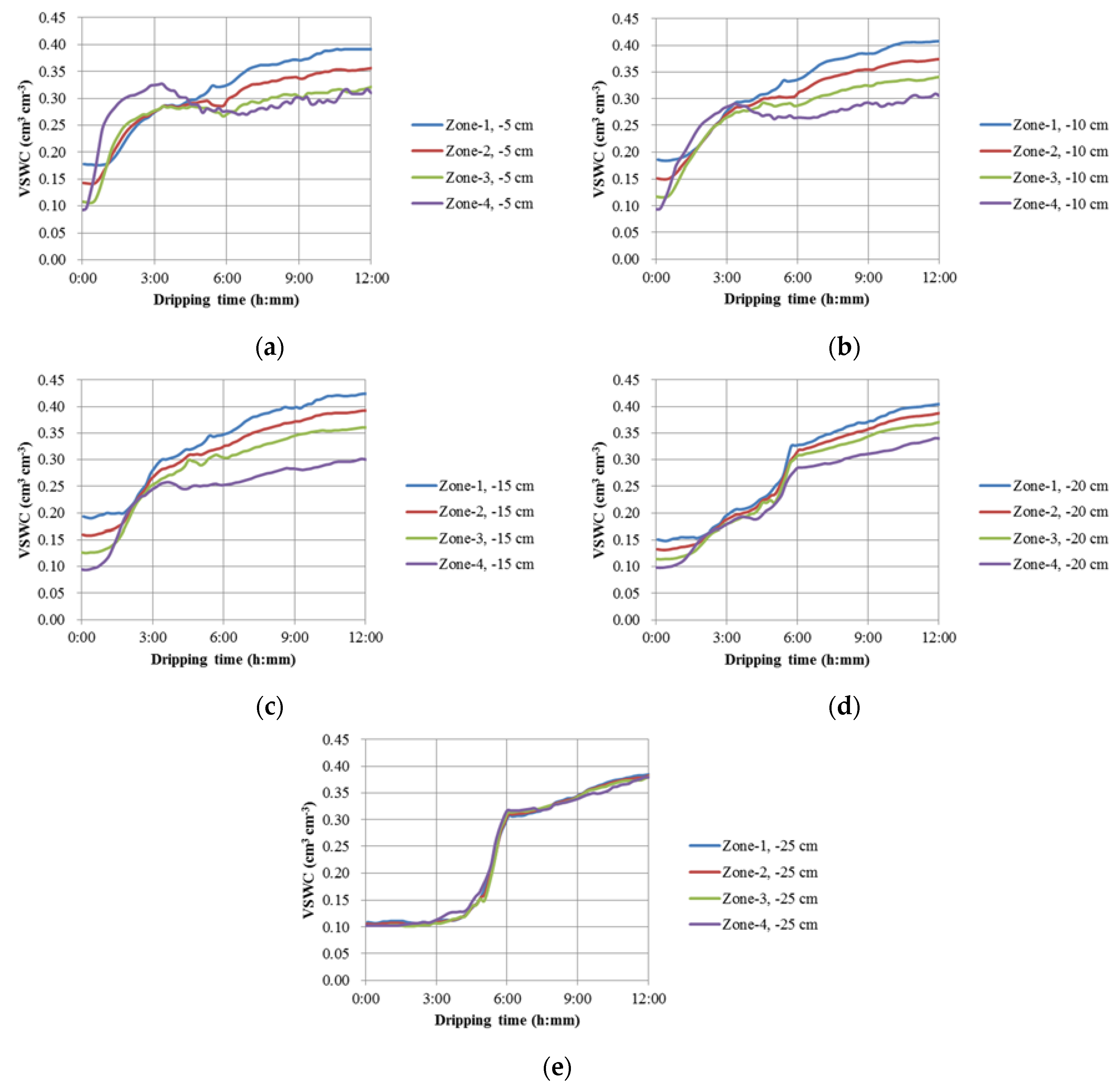
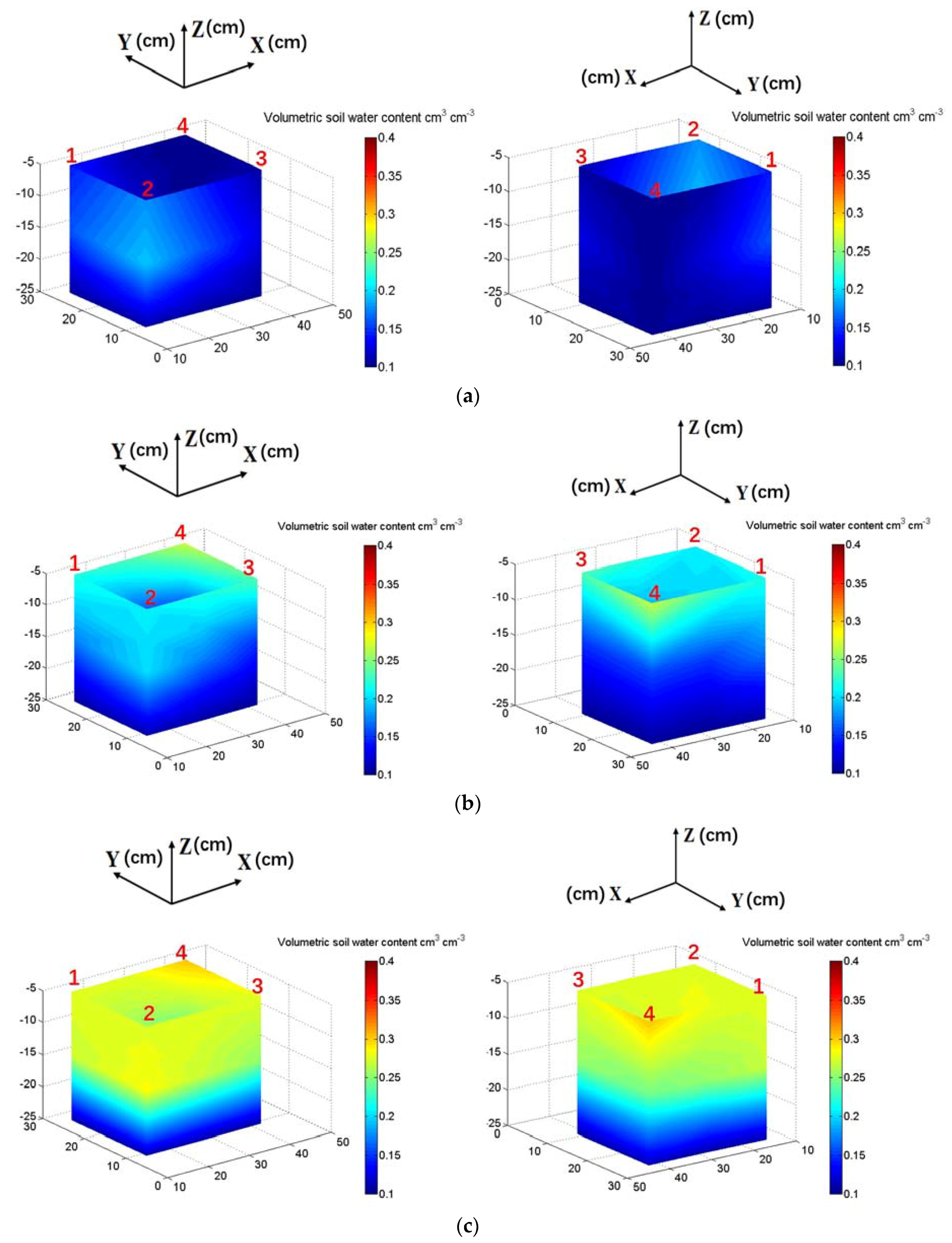

| Soil Bulk Densities (g cm−3) | ||
|---|---|---|
| Layer-1 (−20~0 cm) | Layer-2 (−30~−20 cm) | |
| Zone-1 | 1.428 | 1.10 |
| Zone-2 | 1.165 | 1.10 |
| Zone-3 | 0.902 | 1.10 |
| Zone-4 | 0.729 | 1.10 |
| No. 1 Motor | No. 2 Motor | No. 3 Motor | |
|---|---|---|---|
| compensation index (CI) | 1.242 | 1.242 | 1.062 |
© 2018 by the authors. Licensee MDPI, Basel, Switzerland. This article is an open access article distributed under the terms and conditions of the Creative Commons Attribution (CC BY) license (http://creativecommons.org/licenses/by/4.0/).
Share and Cite
Yu, S.; Chen, C.; Xu, Q.; Cheng, Q.; Yan, X.; Yu, Z.; Ma, Y.; Chen, H. A Novel Dielectric Tomography System for In-Situ Tracking Three-Dimensional Soil Water Dynamics. Sensors 2018, 18, 2880. https://doi.org/10.3390/s18092880
Yu S, Chen C, Xu Q, Cheng Q, Yan X, Yu Z, Ma Y, Chen H. A Novel Dielectric Tomography System for In-Situ Tracking Three-Dimensional Soil Water Dynamics. Sensors. 2018; 18(9):2880. https://doi.org/10.3390/s18092880
Chicago/Turabian StyleYu, Song, Chao Chen, Qiang Xu, Qiang Cheng, Xiaofei Yan, Zhou Yu, Yihan Ma, and Haonan Chen. 2018. "A Novel Dielectric Tomography System for In-Situ Tracking Three-Dimensional Soil Water Dynamics" Sensors 18, no. 9: 2880. https://doi.org/10.3390/s18092880




